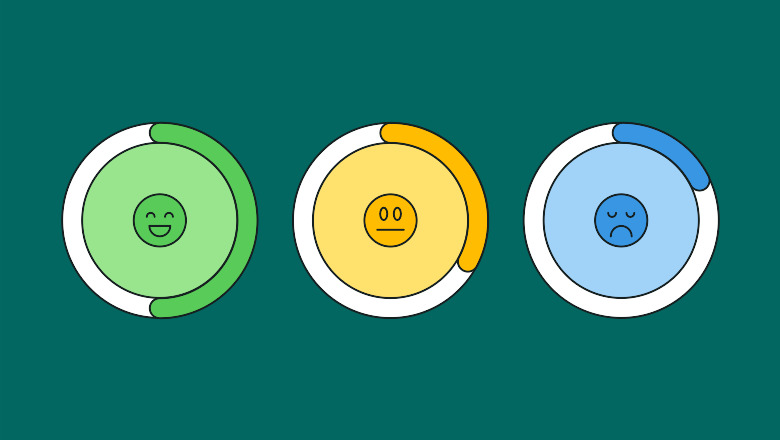Social media has revolutionized the way we connect and communicate with each other. With the advent of new social media channels, the landscape of online interactions continues to evolve. One such channel that has gained significant attention is Threads. In this article, we will explore the concept of Threads social sentiment analysis and how it can be applied to Threads, the new social media channel.
Threads Social Sentiment Analysis: How to Understand User Engagement

In the era of digital communication, social media channels have become vital platforms for individuals and businesses alike. Threads, a new social media channel, is emerging as a hub for engaging conversations and content sharing. To unlock the true potential of Threads, it is crucial to analyze the social sentiment behind the conversations and understand how users perceive the content.
Understanding Threads as a Social Media Channel
Threads differentiates itself from other social media platforms by focusing on meaningful and authentic conversations. It encourages users to share their thoughts, experiences, and opinions more intimately and engagingly. The platform aims to foster deeper connections and promote valuable discussions among users.
What is Social Sentiment Analysis?
Social sentiment analysis is a technique used to determine the prevailing sentiment or opinion expressed in online conversations. It involves analyzing text data, such as social media posts or comments, to identify whether the sentiment behind the content is positive, negative, or neutral. This analysis provides valuable insights into public opinion and user perception.
The Importance of Threads Social Sentiment Analysis
As Threads strives to create a space for meaningful conversations, social sentiment analysis plays a crucial role in understanding how users engage with the platform. By analyzing the sentiment behind user-generated content, Threads can gain valuable insights into user preferences, satisfaction levels, and potential areas for improvement.
How Social Sentiment Analysis Works
Social sentiment analysis relies on natural language processing (NLP) techniques and machine learning algorithms to classify text data into positive, negative, or neutral sentiment categories. These algorithms analyze various linguistic features, such as words, phrases, and emoticons, to determine the sentiment expressed in the text.
Tools and Techniques for Social Sentiment Analysis on Threads

Several tools and techniques are available for performing social sentiment analysis on Threads. These include:
- Lexicon-based analysis: This approach utilizes predefined sentiment lexicons to assign sentiment scores to words or phrases in the text.
- Machine learning classifiers: Machine learning algorithms can be trained on labeled data to classify social media content into sentiment categories.
- Aspect-based sentiment analysis: This technique focuses on identifying sentiment towards specific aspects or topics within the text.
Applications of Social Media Sentiment Analysis on Threads
Social media sentiment analysis on Threads has various applications, including:
- Brand reputation management: By monitoring the sentiment around a brand on Threads, businesses can proactively address any negative sentiment and improve their brand perception.
- Product feedback and insights: Analyzing social sentiment allows businesses to gain valuable feedback on their products or services, enabling them to make data-driven decisions for improvement.
- Identifying emerging trends: Social sentiment analysis can help identify emerging trends and topics of interest on Threads, providing businesses with opportunities for content creation and engagement.
Enhancing Marketing Strategies with Social Sentiment Analysis
Integrating social sentiment analysis into marketing strategies on Threads can lead to more effective campaigns. By understanding the sentiment of users, businesses can tailor their marketing messages, identify key influencers, and engage with their target audience more authentically.
Leveraging Threads’ Real-Time Insights
Threads’ real-time nature allows for immediate access to conversations as they happen. By leveraging real-time insights gained from social sentiment analysis, users can actively participate in discussions, identify emerging trends, and stay ahead of the curve.
Challenges and Limitations
While social sentiment analysis offers valuable insights, it also faces certain challenges and limitations. Some of these include:
- Contextual understanding: Analyzing social sentiment accurately requires considering the context and nuances of language, including sarcasm, irony, and cultural references.
- Data volume and noise: The sheer volume of conversations on Threads can be overwhelming, making it challenging to extract meaningful insights. Additionally, noise and irrelevant content may affect the accuracy of sentiment analysis.
- Data privacy and ethics: Social sentiment analysis raises concerns about data privacy and the ethical use of user-generated content. It is crucial to handle and protect user data responsibly.
Best Practices for Effective Threads Social Sentiment Analysis
To ensure the effectiveness of social sentiment analysis on Threads, consider the following best practices:
- Continuous monitoring: Regularly monitor social sentiment on Threads to stay updated on evolving opinions and trends.
- Validation and calibration: Validate sentiment analysis results by comparing them with human-labeled data. Calibrate the algorithms to improve accuracy.
- Multilingual analysis: If Threads caters to a multilingual audience, implement sentiment analysis in multiple languages to capture a wider range of user sentiments.
Future Trends and Developments
The field of social sentiment analysis is constantly evolving. Future trends and developments may include:
- Advanced sentiment analysis algorithms: Ongoing research in natural language processing and machine learning will lead to more sophisticated sentiment analysis algorithms.
- Real-time sentiment monitoring: Advancements in technology will enable even faster and more accurate real-time sentiment monitoring on platforms like Threads.
- Integration with AI-powered chatbots: Social sentiment analysis can be integrated with AI-powered chatbots to provide personalized and context-aware responses to users on Threads.
Conclusion
In conclusion, social sentiment analysis is a valuable tool for businesses and individuals who want to understand how users engage with Threads. By analyzing the sentiment behind user-generated content, businesses can gain valuable insights into user preferences, satisfaction levels, and potential areas for improvement. Additionally, social sentiment analysis can be used to enhance marketing strategies, identify emerging trends, and stay ahead of the curve.
Are you interested in learning more about how social sentiment analysis can help your business on Threads? Request a demo from AIM Technologies today and see how our platform can help you!
FAQs
1. How does social sentiment analysis benefit businesses?
- Social sentiment analysis helps businesses understand user preferences, improve brand perception, and make data-driven decisions for product development and marketing strategies.
2. Can social sentiment analysis accurately capture sarcasm and irony on Threads?
- Capturing sarcasm and irony accurately in sentiment analysis is challenging but ongoing research aims to improve the algorithms’ contextual understanding.
3. Is social sentiment analysis limited to English language content?
- No, social sentiment analysis can be implemented in multiple languages to capture sentiments from a diverse audience.
4. How can social sentiment analysis enhance marketing strategies?
- By understanding user sentiment, businesses can tailor their marketing messages, identify key influencers, and engage with their target audience more effectively.
5. What are the future trends in social sentiment analysis?
- Future trends may include more advanced sentiment analysis algorithms, real-time sentiment monitoring, and integration with AI-powered chatbots for personalized responses.




